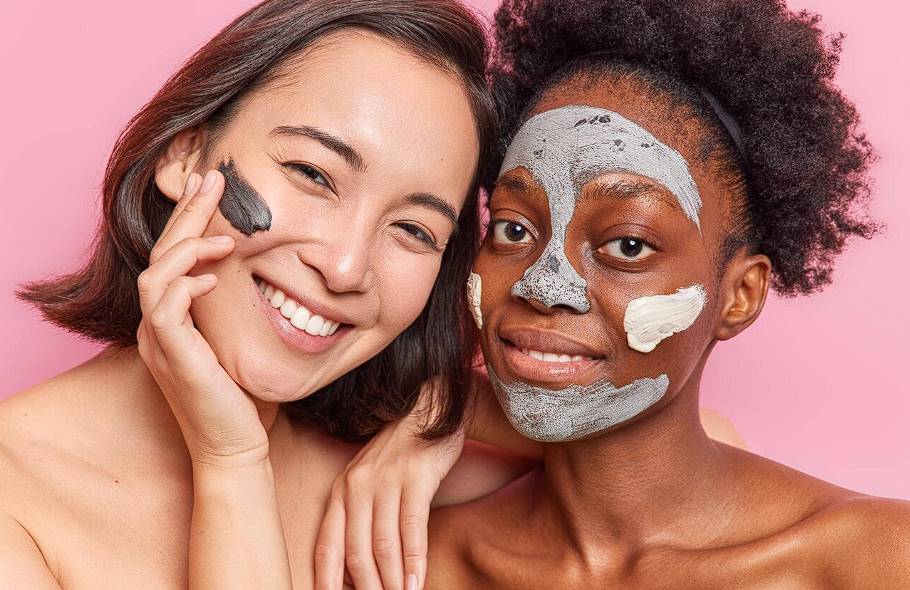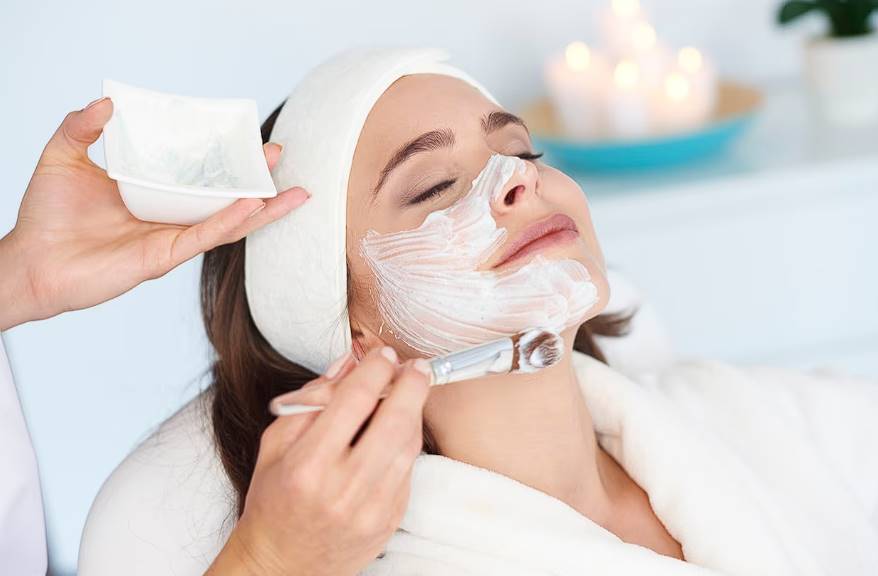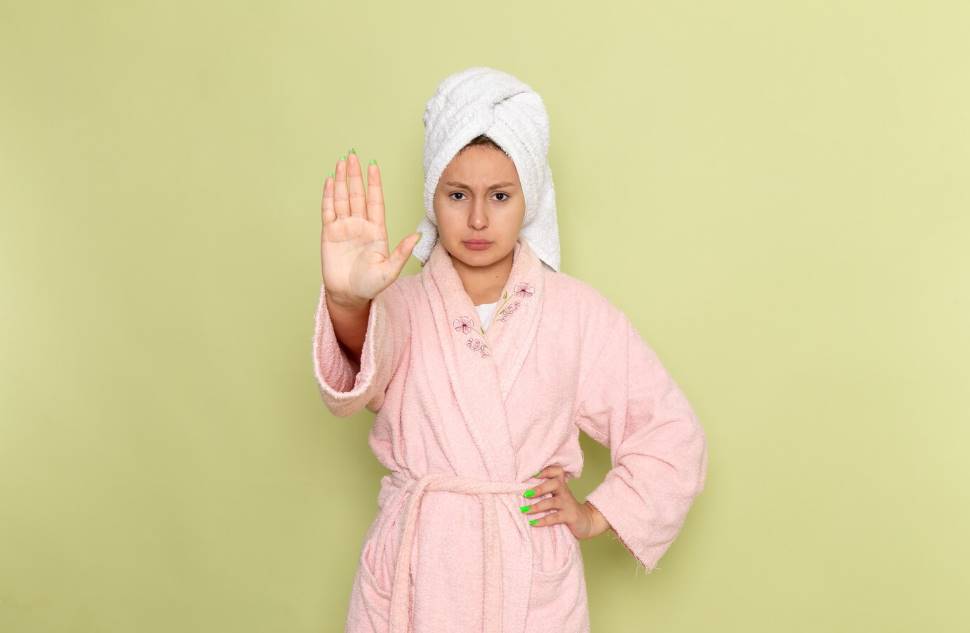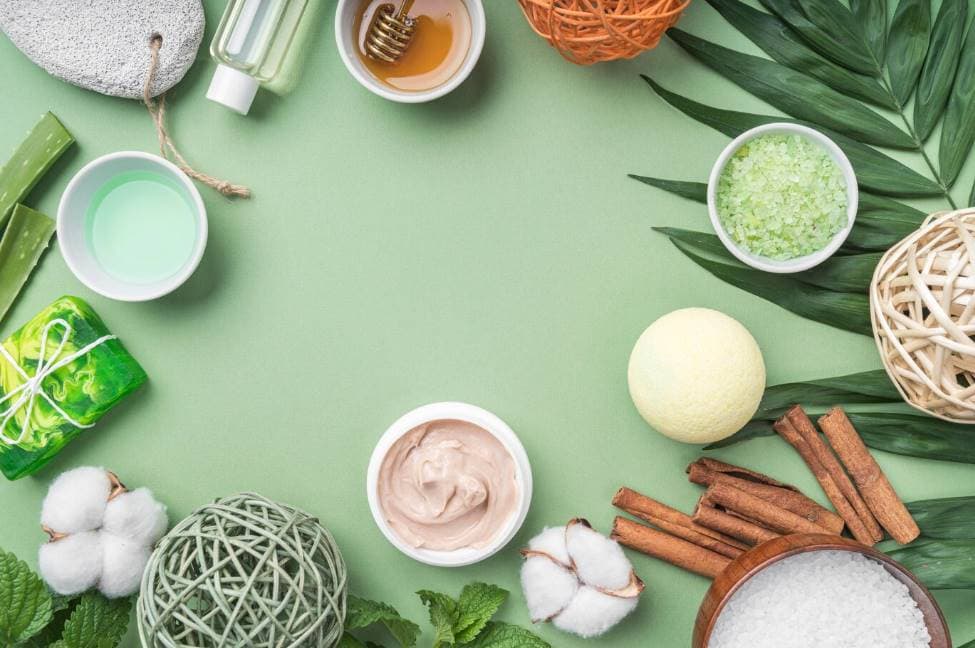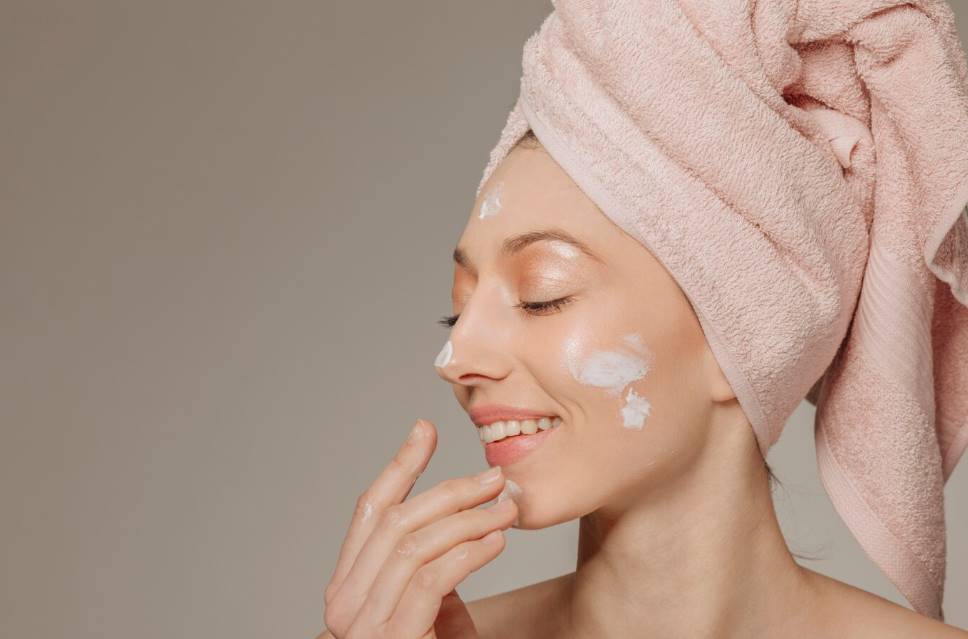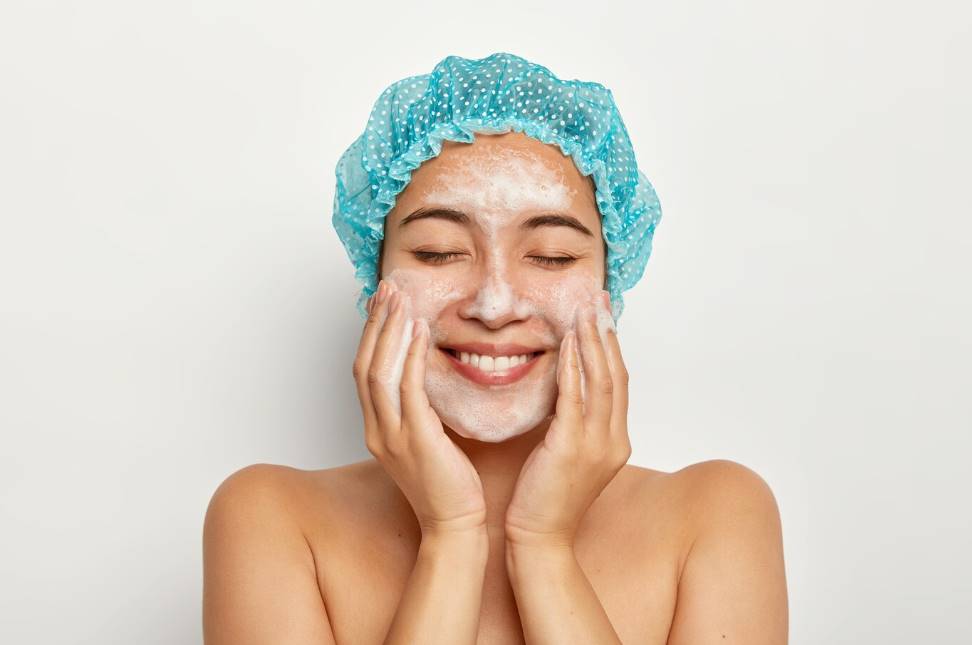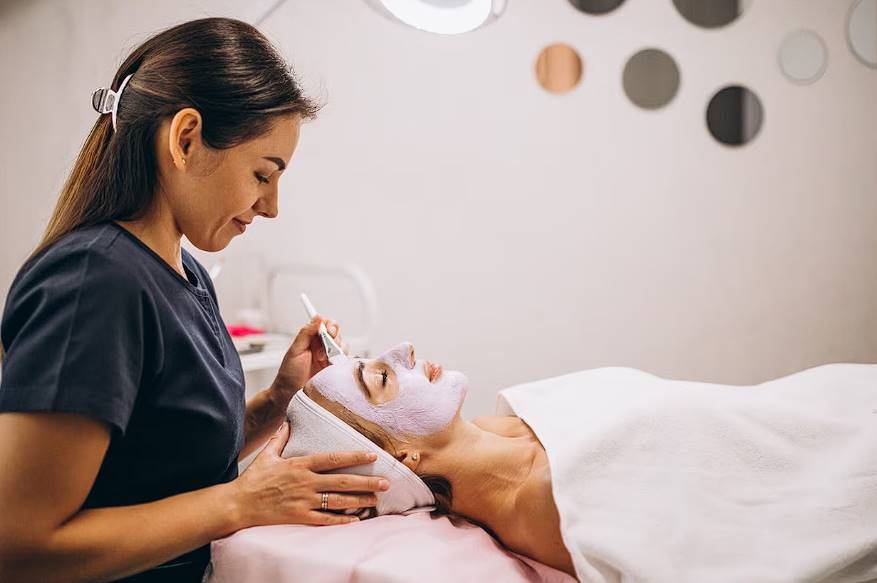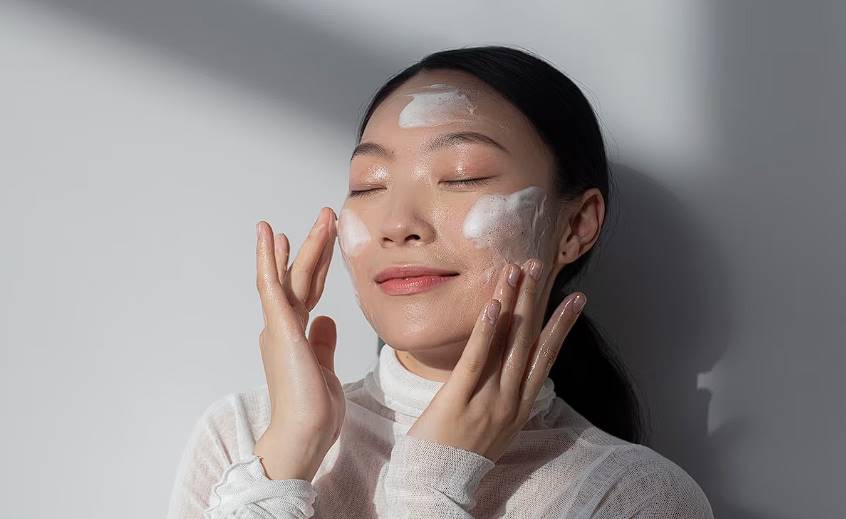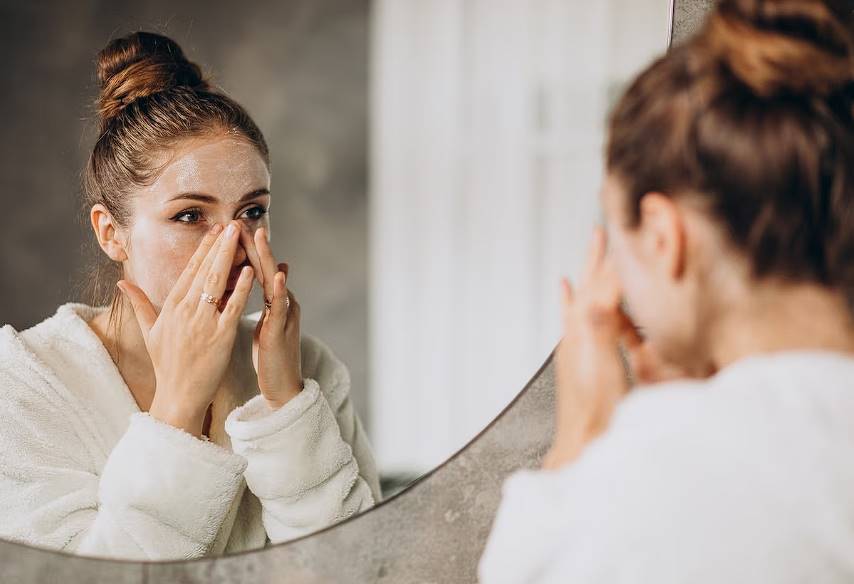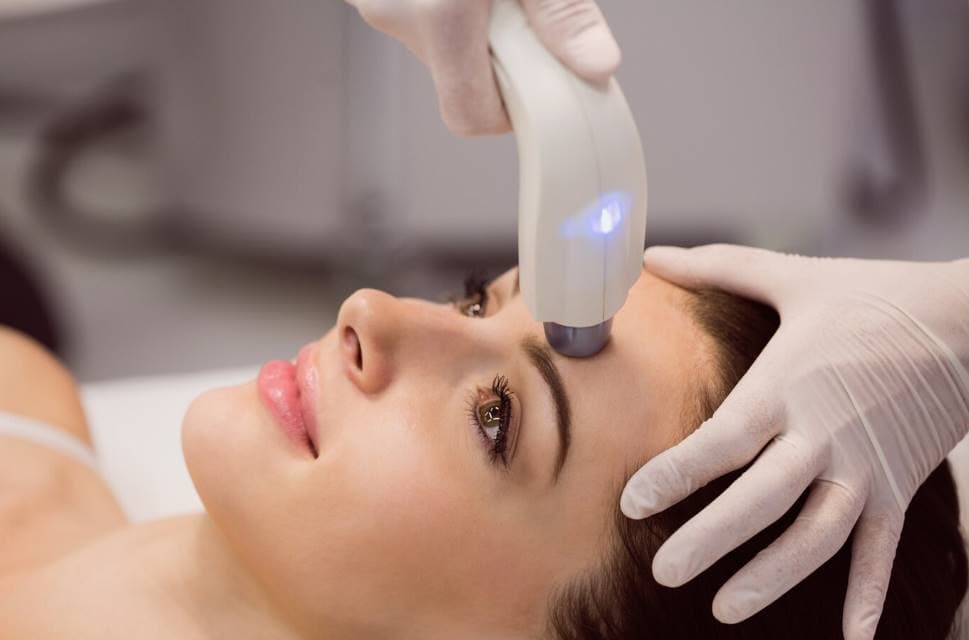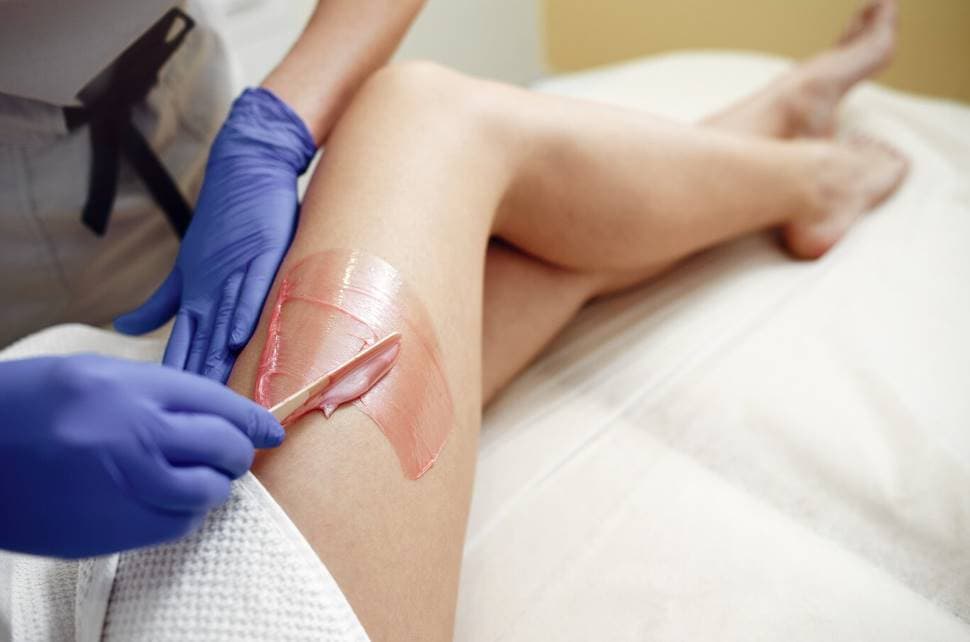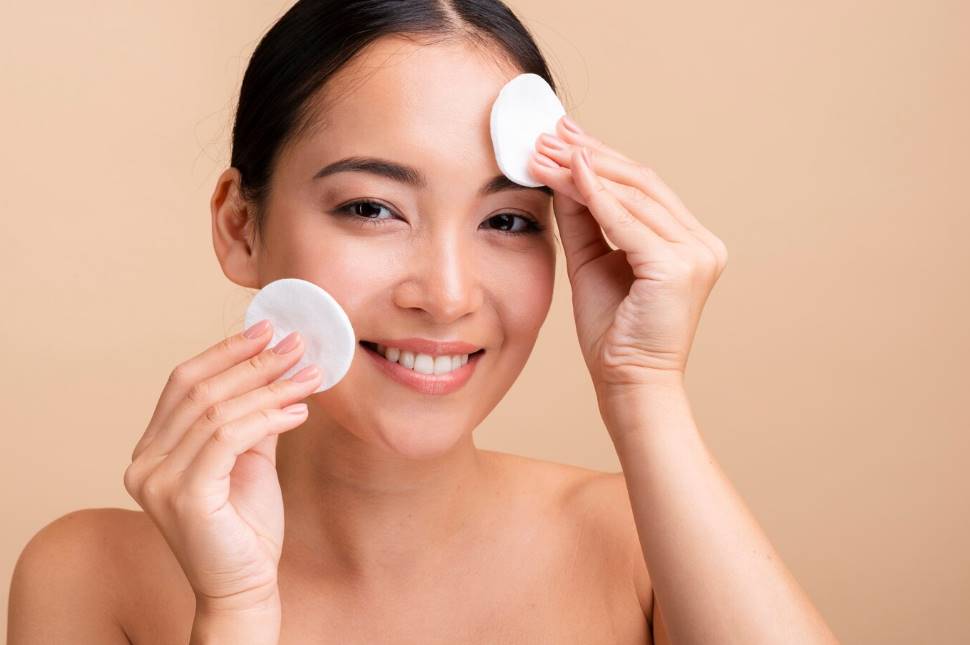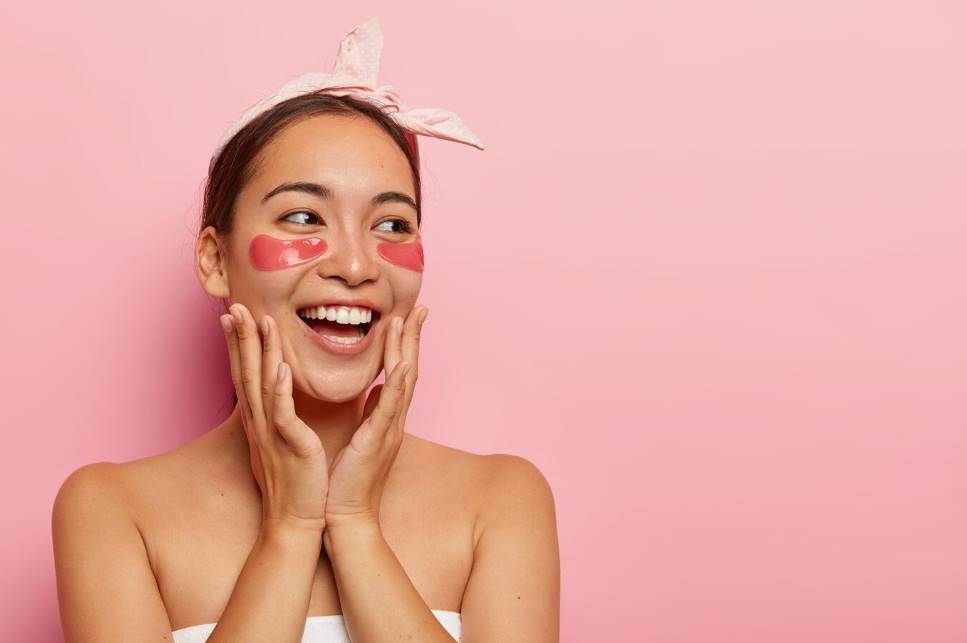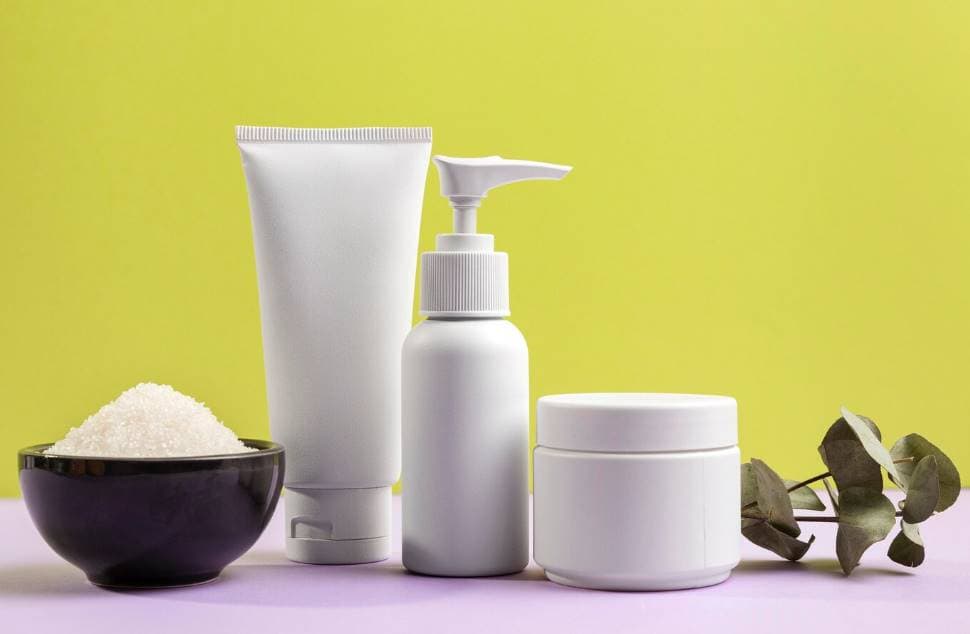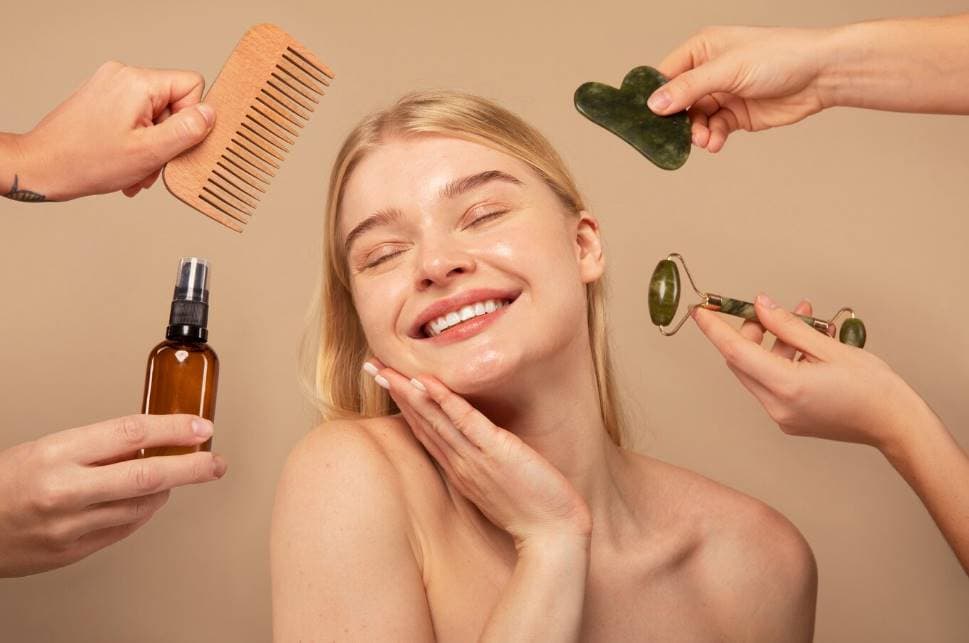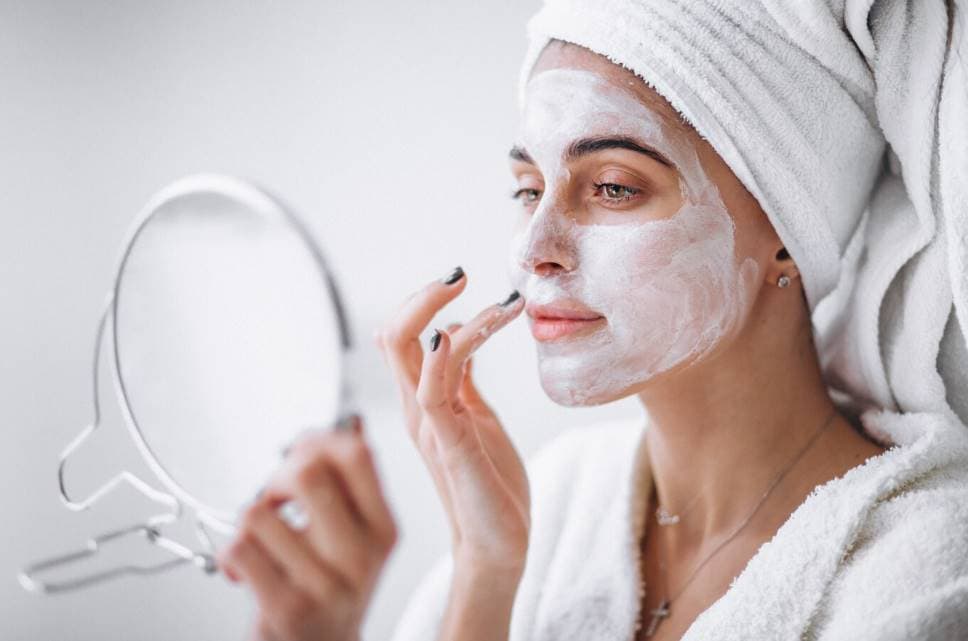You must learn the intricacies of your skin type. Because of its distinctive characteristics—a tendency towards a natural glow and the occasional appearance of blemishes—oily skin calls for a tailored skincare routine.
Investigating the topic of skincare for oily skin will lead you to a wealth of information that will help you achieve a healthy glow.
This article will help you understand oily skin and its causes and identify the key things that will reveal your skin's full potential.
From proper cleansing routines to focused treatments, we'll guide you through the worlds of hydration and rejuvenation, arming you with a full arsenal of tips for taking care of your skin tailored to its needs.
Oily skin can be challenging to maintain. Products that claim to reduce sebum production can backfire and make the condition even worse. This article will teach you several practical methods for dealing with oily skin.
In such cases, what causes oily skin? Androgens, a class of hormones, are to blame for oily skin. All humans, male and female, produce and secrete these masculine hormones. They can lead to sebum overproduction in some cases. When the skin's oil glands become overwhelmed, the pores expand.
When there is an excess of sebum, and the skin and interior of the pores get thickened due to dead skin cells, the sebum cannot be released. This causes blackheads and whiteheads, which are little, painless lumps under the skin.
How Can You Tell If Your Skin Is Oily?
A simple paper test is one of the quickest and easiest ways to determine your skin type. To remove excess oil from your face, pat it with blotting paper. To determine how much oil has been absorbed, hold the sheet up to the light.
The needs, challenges, and potential of each skin type are different. Think about this when picking out your everyday skincare essentials. Consider your skin type when conducting a thorough product analysis. To maximise your skin's health and beauty, you must first identify your skin type.
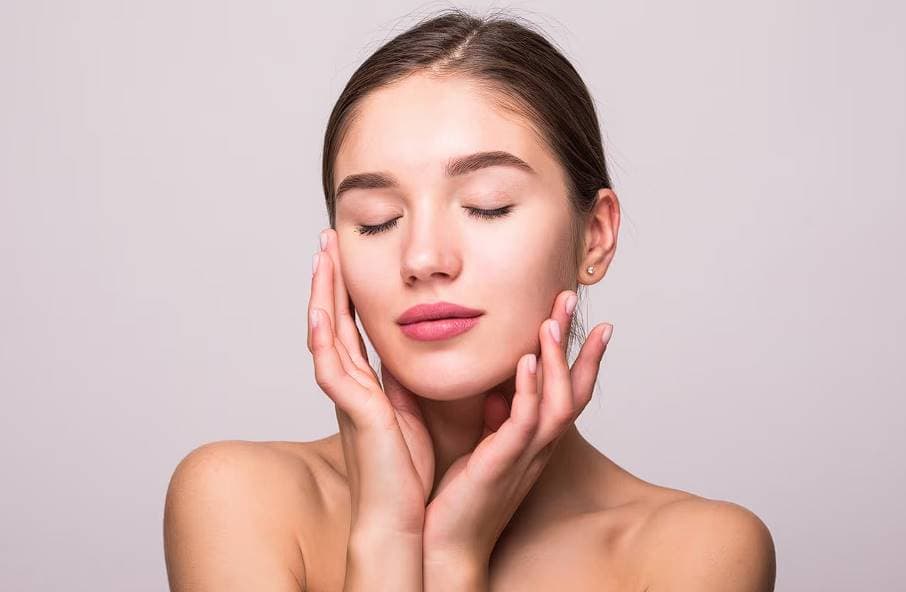
What Are the Characteristics of Different Skin Types?
The four most prevalent skin types discussed in the context of skin care are normal, dry, oily, and combination. But there are certain things to think about for skin care.
Type: Normal Skin
Skin that falls within the "normal" category is neither overly oily nor dehydrated. Normal skin is exceptionally resilient, holding up well in both extremes of temperature.
This skin kind is the most uncommon of all. Normal skin has the following characteristics:
- Have a bright, even complexion.
- No dryness or oiliness has been experienced.
- Feels smooth and flexible and retains moisture well.
- Has small, barely perceptible pores
- not easily triggered by everyday environmental cues
Type: Dry Skin
Dry skin is marked by a condition called "impaired epidermal function" and the risk of damage to the epidermis, which is the top layer of skin that protects it. Some people may have dry skin because of their genes or because they don't take good care of their skin, but for others, the cause is still unknown. Women who are going through menopause often have dry skin.
The primary traits of dry skin type comprise:
- Has tightness and irritation
- Often displaying flakiness
- Shows subtle creases
- Pores appear smaller than usual
- Has reduced sebum secretion
- Applying makeup to this type of skin could be challenging.
Type: Oily Skin
When the skin makes too much sebum, which is needed for it to function properly, this leads to oily skin. Pimples can happen when there is too much grease, and dry, cracked skin can happen when there is not enough. Because of these differences, people with dry skin and oily skin are said to have different skin types.
The primary characteristics of oily skin type include:
Having a shiny look and a lot of pimples
Compared to dry skin, there are fewer lines to see.
Large openings that are easy to see
Because the skin has a lot of oil, makeup may come off quickly.
Even though oily skin is often linked to puberty, it can happen to anyone at any age.
Combination Skin Type
The concept of "combination skin" is commonly misunderstood. Having combination skin means that you have characteristics of more than one facial skin type, which may necessitate a varied approach to skin care. Combination skin combines oily and dry characteristics, making it distinct from normal skin.
Combination skin typically manifests itself in these primary forms:
- T-Zone skin includes the area surrounding the forehead, nose, and chin and can either be oily or normal.
- U-ZONE, or the area around the eyes, nose, and mouth, is typically dry or normal.
Excess oil production in the T-Zone can cause an unpleasant sheen and make acne and blackheads more likely. However, other areas of skin, such as the cheeks, mouth, and eyes, are more vulnerable to problems like irritation, dryness, peeling, and cracking. As a result, persons who have mixed skin typically need to use different skincare products for different parts of their face.
What Are Some Skin Care Items That Actually Make Oily Skin Worse?
Drying products may seem like a good idea at first, but they cause more sebum to be produced in the long run, so it's best to avoid them.
Products that include alcohol or aromatic oils or cause your skin a tingling sensation (such as mint, lemon, eucalyptus, and menthol) should also be avoided. Tingling is a sign of annoyance, which is never desirable.
Ingredients offered in solid form (like a bar of soap) or including hydrophilic creams and lotions can plug the pores and make oily skin look greasy, as is the basic concept for oily skin. Use serums and gels, which are lighter liquids, in place of heavier creams.
Tips From Dermatologists
Although oily skin can clog pores and exacerbate acne, it does have some benefits. Since oil aids in protecting the skin, those who naturally produce more oil tend to have thicker skin and fewer wrinkles. Finding an optimal balance between oiliness and dryness is the challenge.
Dermatologists provide helpful dos and don'ts for managing oily skin:
DOs:
- You should cleanse your face before bed, after working out, and after waking. Scrubbing or harshly removing makeup can aggravate the skin and make it look worse.
- To prevent acne, pick up some skin care products that say they are "oil-free" and "non-comedogenic." Makeup, moisturiser, and cleansers that don't clog pores or exacerbate acne.
- Choose a face wash with mild foaming action. Harsh face washes can irritate the skin and cause it to produce more oil, so it's best to avoid using them.
- Even though your skin is oily, it still needs daily moisturising. To avoid wasting time using multiple products, try finding a moisturiser that also acts as a wide-spectrum sunscreen (SPF 50 or greater).
- Sunburns, age spots, wrinkles, and even skin cancer can be avoided with sunscreen before heading outside. Choose titanium dioxide or zinc oxide-based sunscreens, and avoid oils and perfumes.
- Makeup should be oil-free and water-based to keep your pores clear.
DON'Ts:
- Don't use cleansers that contain oil or alcohol; they're both skin irritants.
- Makeup should always be removed before going to bed.
- Keep blotting papers on hand and use them as needed throughout the day. To avoid spreading oil, press the paper against your face.
- If you want to keep your face clean and avoid transferring bacteria and oil from your hands, try to avoid touching it during the day.
- Ensure your hands are clean before touching your face to clean, moisturise, or apply sunscreen or makeup.
Which Moisturiser Is Ideal For Oily Skin?
Our skin can be taken to a new level with the appropriate formula. In this article, we will discuss the best moisturisers for oily skin. However, this information applies to all skin types.
Creams
Cream moisturisers often use an oil-and-water combination as their base recipe. They are ideal for people with dry areas, scaliness, and dry skin because of their intense hydration. However, they could feel heavier and more clogging on the face if you have oily skin.
Gel-Based
Those with oily skin often prefer gel moisturisers since they are less greasy than cream moisturisers. Because of their water content, they are readily absorbed by the skin. One benefit is that, unlike certain cream moisturisers, they don't leave a greasy or shiny feeling behind.
In particular, aloe vera gels have become increasingly popular in the cosmetics industry because of the wide range of problems they may solve, from dry skin and bug bites to sunburn and unruly locks.
Whip-Based
The newest trend in the cosmetics market, whipped moisturisers, should be considered more. They're a cross between a cream and a gel, with a whipped texture that's light on the skin yet still hydrating like a cream would. This formulation has shown promise as a superb option for oily skin. On the other hand, whipped moisturisers tend to be exclusive to more expensive lines.
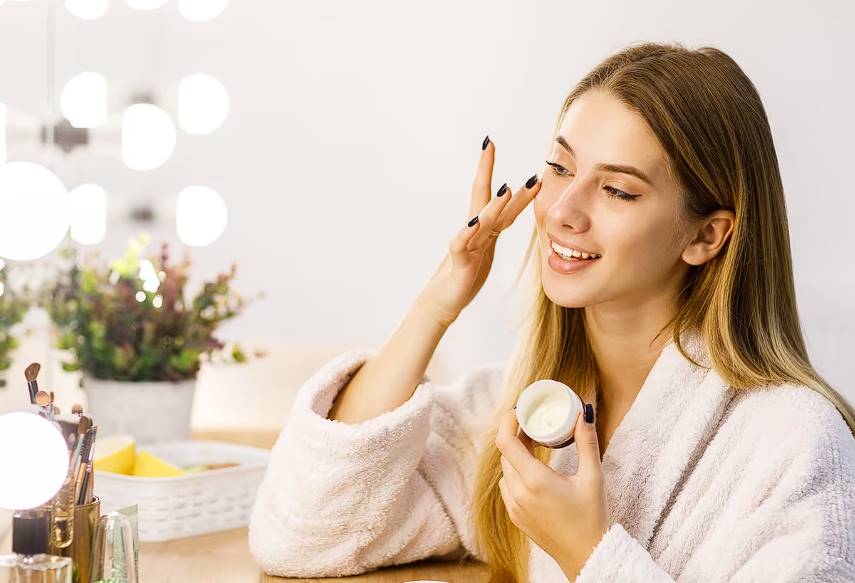
Taking Care of Oily Skin the Right Way
Here are some of the most important things to keep in mind when caring for oily skin.
Do a Daily Cleanse
A gentle, water-soluble face cleanser should be used twice a day. It's best to completely remove the cleanser from your face. Sodium lauryl sulphate and other irritants should be absent from the cleanser, and the absence of smell is also recommended.
Apply A Toner
Antioxidant and cell-communicating elements found in alcohol-free toners are vital. These chemicals are commonly included in toners and aid in skin recovery, the appearance of reduced pore size, and the complete removal of cleanser and makeup. If you don't do this, you risk getting clogged pores.
Exfoliate
This is a really important stage. The best technique to get rid of dead skin cells, minimise the appearance of clogged pores and acne, and smooth out the skin is to exfoliate. Salicylic acid, or BHA, is the finest exfoliating component for oily skin.
Apply a sunscreen-infused day cream.
A product with UV protection is essential, even for oily skin, to avoid premature ageing and inflammation. Choose a lightweight sunscreen, or try a foundation and powder for a matte look if your skin tends to shine.
Try a Night Cream That Will Rehydrate Your Skin
In the evening, apply a mild, moisturising gel or serum with antioxidants and substances that improve the skin's protective barrier and contain no ingredients that will clog pores.
Get Rid of Excess Sebum
Make regular use of oil-absorbing cosmetics. You don't have to do this, but if your skin tends to get oily, you might like it.
Conclusion
To combat oily skin and attain a radiant complexion, a specialised skincare programme is often necessary. Androgens, a class of hormones, are to blame because they trigger the body to produce excessive amounts of sebum, which in turn clogs pores and makes blackheads and whiteheads more visible. You can do a paper test to see if your skin is oily by wiping away any excess oil.
Normal, dry, oily, and combination skin are the four most common skin types described in the context of skin care. Skin that is considered normal is resilient and has a clear, even tone, is neither dry nor oily, is supple and elastic, and has few visible pores. Damage to the epidermis and reduced epidermal function are hallmarks of dry skin. Excess sebum production is the root cause of oily skin.
Products that dry the skin, chemicals that generate tingling sensations, and aromatic oils should all be avoided when trying to control oily skin. Lighter liquids such as serums and gels should be used in place of heavier creams.
Dermatologists recommend washing your face before bed, after exercise, and after waking to control oily skin. Acne can be avoided by using makeup, moisturiser, and "oil-free" and "non-comedogenic cleansers," meaning they won't clog pores or make acne worse. Select a face wash with a gentle foaming effect to prevent more oil production from your skin.
You still need to moisturise your oily skin every day. To protect your skin from sunburn, age spots, wrinkles, and potentially skin cancer, use a moisturiser with broad-spectrum sunscreen (SPF 50 or above). Makeup should be oil-free and water-based, and you should wear sunscreen with titanium dioxide or zinc oxide.
Avoid touching your face throughout the day, use a cleanser without oil or alcohol, take off your makeup before night, and carry blotting papers. If you have oily skin, you may learn to control it so your skin always looks radiant. Here's how to take care of oily skin:
First, make sure your face is completely clean before you put on any cosmetics or moisturiser. Avoid Sodium lauryl sulphate and other irritants by washing your face twice daily with a mild, water-soluble cleanser. Use an alcohol-free toner with antioxidant and cell-communicating ingredients to speed up skin recovery and shrink pores. Salicylic acid (BHA) exfoliation is a great way to get rid of dead skin, reduce the appearance of enlarged pores, and reveal smoother skin. Prevent irritation and ageing by using a day cream with sunscreen. Try a night cream that doubles as an antioxidant shield and a hydrating moisturiser. Use oil-absorbing makeup regularly to get rid of excess sebum.
In conclusion, oily skin requires special attention, including regular cleansing, using alcohol-free toners, exfoliation, applying day creams containing sunscreen, applying a night cream containing antioxidants, and avoiding excessive sebum.
Content Summary
- Oily skin requires a tailored skincare routine to maintain a natural glow and combat blemishes.
- Understanding the causes and intricacies of oily skin is essential for achieving a healthy complexion.
- The article provides a comprehensive skincare guide tailored to oily skin needs.
- Oily skin can be challenging to manage, and using products claiming to reduce sebum can backfire.
- Androgens, a class of hormones responsible for oily skin, lead to sebum overproduction.
- Excess sebum and dead skin cells can lead to black and whiteheads.
- Determine your skin type, including oily skin, through a simple paper test.
- Different skin types have distinct needs and challenges, so tailor your skincare products accordingly.
- Normal skin has a bright complexion, balanced moisture, and barely perceptible pores.
- Dry skin is characterised by tightness, flakiness, and reduced sebum secretion.
- Oily skin has a shiny appearance, pimples, and visible large pores.
- Combination skin combines oily and dry characteristics in different face areas.
- Avoid drying products, alcohol, and aromatic oils that can worsen oily skin.
- Opt for oil-free and non-comedogenic skincare products to prevent acne and clogged pores.
- Use a mild foaming face wash for oily skin to avoid excessive oil production.
- Despite being oily, daily moisturising is essential for oily skin; choose a lightweight moisturiser with SPF.
- Sunscreen protects oily skin from sunburns and skin cancer; choose oil-free options.
- Oil-free and water-based makeup is best for maintaining clear pores in oily skin.
- Avoid cleansers with oil or alcohol as they can irritate the skin.
- Remove makeup before going to bed to prevent skin problems.
- Keep blotting papers handy to manage excess oil throughout the day.
- Refrain from touching your face to prevent bacterial transfer and excess oil spread.
- Consider the best moisturiser based on your skin type: creams, gel-based, or whip-based.
- Gel moisturisers are preferred for oily skin because they are non-greasy and quick-absorbing.
- Whipped moisturisers provide a light texture while offering hydration for oily skin.
- Essential steps for caring for oily skin include daily cleansing, toning, and exfoliating.
- Use a water-soluble face cleanser without irritants and strong fragrances.
- Toning with alcohol-free toners helps in skin recovery and pore size reduction.
- Exfoliate with salicylic acid (BHA) to remove dead skin cells and minimise acne.
- Apply a sunscreen-infused day cream and rehydrate the skin with a moisturising night cream.
Frequently Asked Questions
Oily skin is caused by the overproduction of sebum, which is linked to androgens (hormones). To manage it effectively, use oil-free and non-comedogenic products, cleanse twice daily, and consider exfoliating with salicylic acid.
No, even oily skin needs daily moisturising. Look for lightweight, non-greasy moisturisers that won't clog pores and help maintain the skin's moisture balance.
For oily skin, opt for oil-free and water-based makeup products. These won't add extra oil to your skin and will help clear your pores.
Yes, blotting papers are great for managing excess oil. Simply press them against your face to absorb the oil without spreading it around.
You can perform a simple paper test by patting blotting paper on your face. If it absorbs a significant amount of oil, you likely have oily skin.
